I swear the chicken breasts they are selling in the grocery store come from pterodactyls – they can be huge! Boneless skinless chicken breasts are a mighty useful source of protein, being low in fat, a pretty good value for dollar spent, and very easy to prepare in a number of ways.
When Carter is living in, I pan-roast a “value tray” of 6 or 8 BSCBs, freeze them individually wrapped, and he slices them up as needed for sandwiches and salads, instead of using salty higher-fat deli meat. I even smoked a whole bunch — all the flavor of bacon with NO FAT! One large chicken breast makes an excellent stir-fry for two diners. Since those delicate little chicken breasts of my memory are long gone, I plan for leftovers.
Chicken Picatta is the source recipe for this one. It is an elegant, classic dish of flour dredged and egg-dipped chicken escalopes (fancy French word for thin pieces) pan-fried in butter or olive oil and finished with lemon juice and capers. I am personally not fond of the flour and egg coating (Memories of Glue), although I appreciate that it prevents the chicken from drying out while cooking. My recipe leaves that step out — it’s messy and makes too many dirty dishes. To compensate for the lack of protective coating, the chicken needs to cook really, really quickly, which is a bonus in my estimation. Faster than a speeding food truck, yet elegant enough to charm your new best friend.
I’m a big fan of brining chicken breasts, especially if I’m going to cook them in my smoker, but brining is not necessary for this quick dish. “Enhanced” chicken, the kind you buy frozen in bulk boxes at Costco, has been treated (injected) with a salty solution to make it tender and plump, so it doesn’t need brining in any case. Convenient and inexpensive as this option is, please remember you are paying chicken prices for salt water. I prefer the product labled “air chilled”, even though that may be a synonym for “overpriced”. You can blot your wetter chicken with paper towels.
The basic method of this recipe can be applied to other kinds of meat. You could use thinly sliced veal, or a slice of pork loin, or a diagonal slice or two of pork tenderloin, pounded just like the chicken. I don’t think the flavors or the method are particularly suited to beef. You could pan-fry thin fish fillets in a similar way (haddock or sole), but the heat and timing would need adjustment (a little lower, a little longer), and you wouldn’t necessarily put the fish back into the pan to glaze with the sauce because it might break up – just pour it over. Try it with chicken first, and generalize the skill when you’re comfortable with it.
Chicken with Lemon and Capers
Ingredients:
- 1 large chicken breast
- Salt and pepper
- 2 tsp butter
- 2 tsp oil (any kind, just NOT EVOO or Sesame)
- ¼ cup white wine or chicken broth
- ¼ tsp (or so) no-salt onion/garlic herb blend of your choice (or you could use fresh garlic and finely chopped shallots if you have the resources and time – add them just before the wine, and use fresh herbs for garnish)
- 1 Tbsp capers, roughly chopped if large
- ½ lemon, seeds removed

Capers are the flower buds of a spikey little Mediterranean plant that have been picked by hand, dried, and pickled. The smaller they are, the more aromatic, and the more expensive. Their flavor is quite unique, and adds a sharp, bright note of contrast to whatever you put them in. They are a classic element in puttanesca sauce (look it up), and I like them in egg or tuna salad, or with any kind of cooked fish, as their flavor is something like lemon zest in character (they are essential in good tartar sauce). They come bottled in brine, or packed in salt, so rinse them well before you add them to anything, and if you get the bigger ones, give them a bit of a chop. Caper berries are the mature fruit of the same plant, and while their flavor is similar (but not so intense), the texture is quite different – they’re like a seedy little olive, sort of. Tasty, though. Nifty garnish.
Method:
If your chicken breast came with the filet still attached (that’s the tapered strip of muscle with a tendon running through it that will be attached to the underside of the chicken breast), gently pull it away and save it for another time. (I like to save them up frozen until I have enough to make a batch of crispy chicken fingers.)




With a very sharp knife, cut the chicken breast in half horizontally, as shown. Keep your non-knife-holding hand flat on top of the piece of chicken to keep it compressed and under control, and to avoid accidentally slicing a finger. Here’s the tip of the day – make sure you have a damp cloth or a piece of non-skid shelf liner under your cutting board always, so it doesn’t skitter around and slide on your counter top while you’re cutting or chopping. It prevents accidents. Really! Do it every time!
Now you have two pieces of chicken, one for tonight and one for the “planned over” (or one for you and one for a friend – you may need to add a few more capers if you’re entertaining with this recipe). Cook ‘em both and save one for later, or save the second piece raw and well wrapped for tomorrow’s stir-fry.
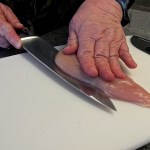

Place the chicken piece(s) between sheets of plastic wrap or inside a plain plastic freezer bag. Give the pieces a little pound with the flat side of a meat mallet (as shown), or the heavy end of a wine bottle, or a rolling pin, until the pieces are nice and thin, but not so thin you could read the newspaper through them – a little more than half a centimeter, a little less than 1/4 inch
Season the chicken lightly with salt and pepper. This is an important step. Don’t leave it out. Make sure you wash your board before you use it again – put it in the sink so you don’t forget.


In a heavy-bottomed frying pan (I like well-seasoned cast iron, but feel free to use your non-stick), heat the butter and oil together over medium high heat. The oil will keep the butter from browning too quickly, but it will not prevent it from burning if the heat is too high or you forget what you’re doing (don’t cook and text). The water in the butter will cause it to foam and spit if the heat is too high – adjust your setting. As long as there is water in the butter, it can’t get quite hot enough to brown the chicken nicely. Wait until the foaming subsides and the butter is just beginning to brown before adding the chicken.

This is still too foamy. Wait a bit longer.

This is much better.
Make sure your chicken has a nice dry surface before you add it to the pan, so it will brown rather than steam. Give it a blot if it looks a little leaky. It should make that nice sizzling sound as it hits the hot butter/oil mixture. The first side will get nice and brown around the edges in less than 30 seconds, so don’t walk away. Flip it over and brown the other side (also less than 30 seconds). It’s that fast. Really!


Remove the pan from the heat, and the chicken from the pan. Put the chicken on a plate (a warm plate, if you planned ahead) while you mess with the pan juices. You might think that the chicken will still be raw, but it won’t be. It’s so thin that carryover cooking (it’s a real thing — look it up) that is happening on the plate will finish it, and it’s going back into the pan to glaze and re-heat as well. If you cook the chicken too long, it’s going to be tough and dry, and quite possibly burned. Chicken breast has hardly any fat in it, so there’s nothing in the meat to melt and tenderize it – cook it fast and let it rest.

Put the frying pan back on the burner, and reduce the heat to medium. Add the wine (or chicken broth) – there should be quite a bit of bubbling and steaming. Mix it around to incorporate the butter/oil and any browned chicken juices. Add the onion/garlic herb blend and the capers. Continue cooking until the volume of the sauce has reduced by half.
Add the chicken back into the pan along with any juices that have collected on the plate. Turn it so it gets coated with the pan sauce and warms back up.

Squeeze some lemon juice over the chicken (make sure you take the lemon seeds out of the piece before you squeeze, or you’ll be fishing for them later). The bright flavor of lemon juice starts to lose its loveliness when introduced to heat, so the lemon juice is absolutely the last thing you add before serving.

Serve the chicken over rice or couscous, pouring the sauce over the top. Don’t forget some greens on the plate, in the interest of your general well-being (you know who I’m talking to), and for beauty of presentation (they say you eat with your eyes first, you know).
Check back to my write-up on How to Cook Rice, especially the part about keeping single servings in your freezer. If you picked up your chicken and a lemon on the way home, and had the other ingredients on hand, you could be eating dinner in less than 30 minutes!
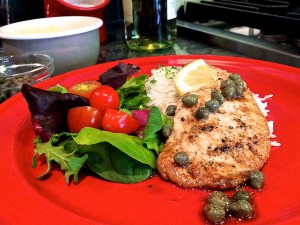



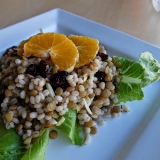
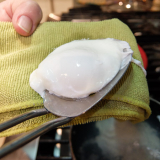
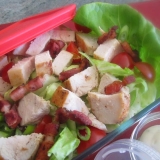
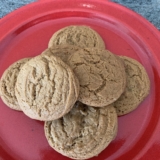
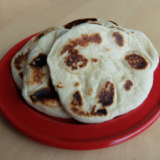
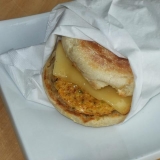
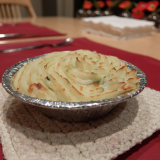
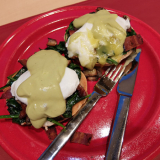
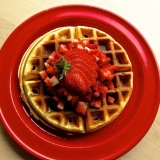
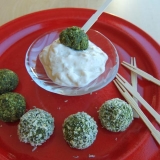
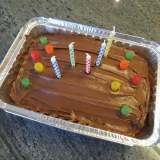
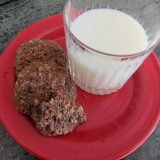
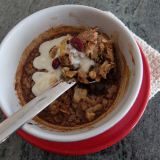
Leave A Comment